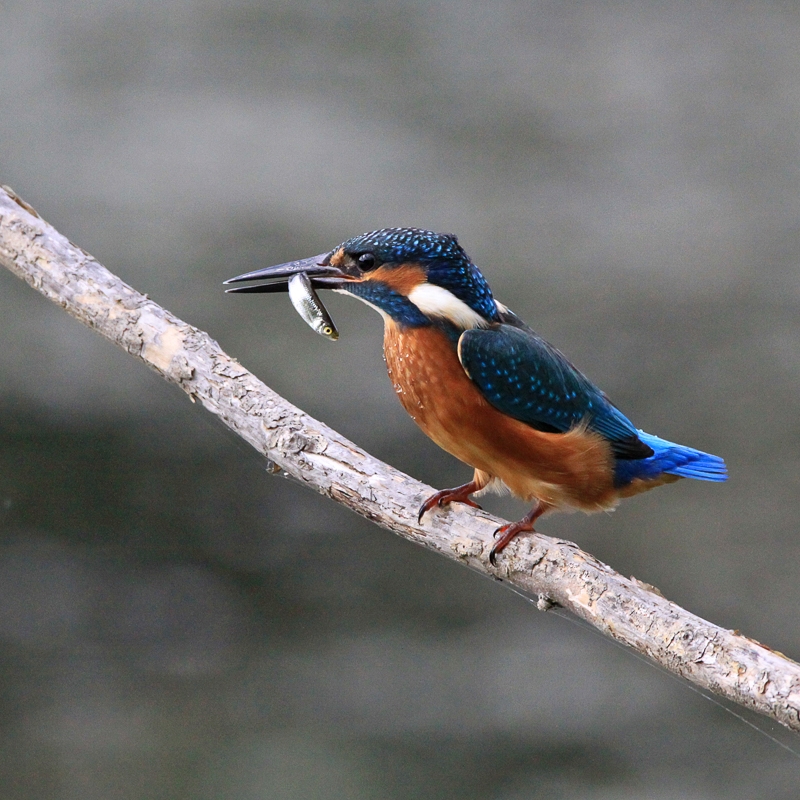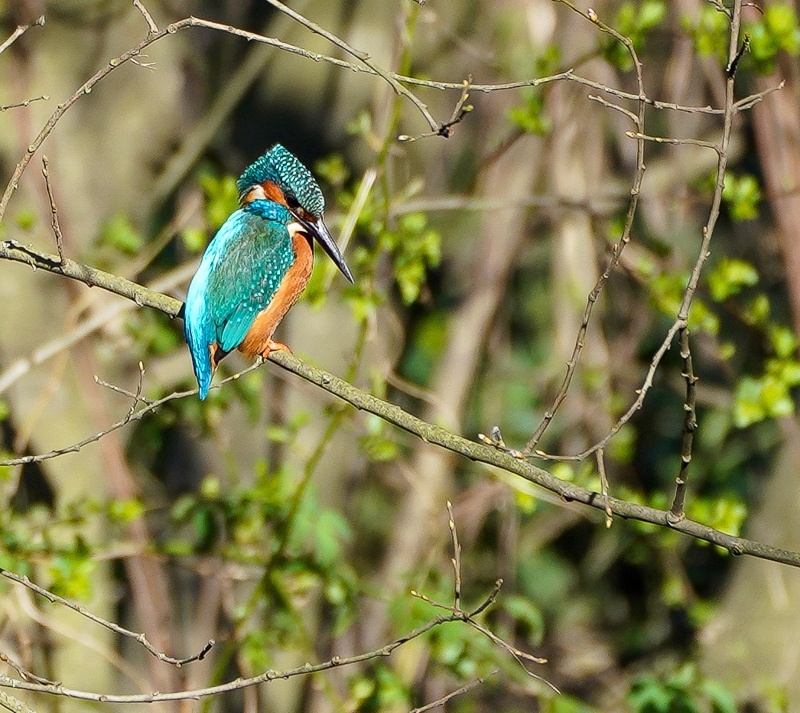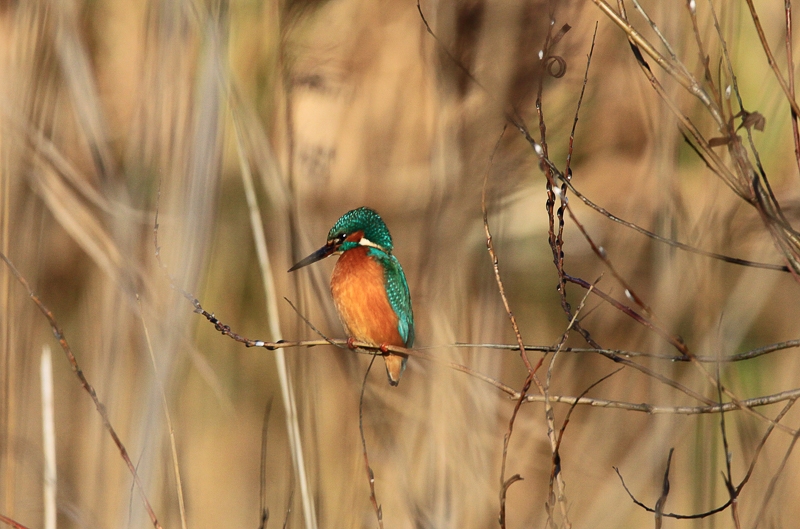KINGFISHERS' MAGIC COLOUR-CHANGING FEATHERS

Possibly the best part about kingfishers are their incredible colour-changing feathers!
Kingfishers can look different from day to day - sometimes they look completely and deeply blue, and sometimes they look almost completely turquoise or green. The reason for this lies in the way that their feathers create colour.

If you love collecting feathers or have read Where the Crawdads Sing and are trying to create a Kyra-esque feather wall, you might be disappointed by kingfisher feathers, because they’re only orange or blue at the tip - the cyan feathers have a particularly small coloured area. The rest of the feather is grey.
The colour of a kingfisher comes from the barbs of its feathers - they’re the sideways branches that come off from the central shaft of the feather. These barbs create colour in different ways.
The orange breast feathers contain pigment granules which selectively absorb short-wavelength light - this leaves the long wavelength light to be reflected and scattered and, you’ve guessed it, orange is long wavelength light.

It’s different with the cyan and blue barbs though. Research by Dr Bodo Wilts and others in 2011 found that whilst the orange feathers have straightforward orange-reflecting pigments, the cyan and blue feathers have a spongy nanostructure - which means that under the microscope a cross-section of the barb looks like a sponge - full of irregular little holes.
The fact that these holes are slightly different sizes means that the feather has different ‘reflectance spectra’, which describes variation in the absorbance of different wavelengths of light. The barb is enveloped in a cortex, which acts as as a thin film with inconsistent thickness, which also contributes to the reflectance.
Importantly for our purposes, the structure of these feathers means they're iridescent. Iridescence means that the hue (the colour or shade) changes with the angle of observation and the angle of illumination. It’s a bit like when you see a rainbow on the surface of some spilt oil - except that with kingfisher feathers, the range of colours is small - just blue and green.

What this means is that sometimes when you look at a kingfisher the cyan and blue feathers will look blue, and sometimes they’ll look turquoise or green or a mix - dependant upon the angle you’re looking from and the lighting.
The colour-changing magic of kingfishers is apparent in the images in this article - the colours haven't been adjusted in processing!
Have you seen blue kingfishers, green kingfishers, or both? Let me know!
RSPB Fairburn Ings is a great place to see kingfishers if you're still searching.
Share with your friends
Subscribe to learn more
Join me in exploring our natural world and cultural heritage as we learn how to protect and restore it. Get notified on my latest posts and a monthly newsletter on wider conversation topics for us to chat about.
Recent Posts
If you enjoyed this one, then you might like these too.